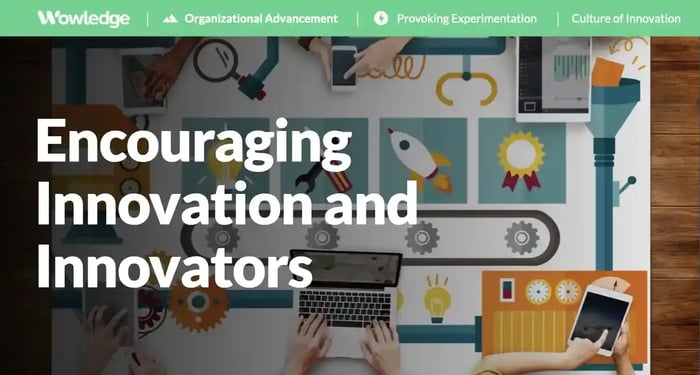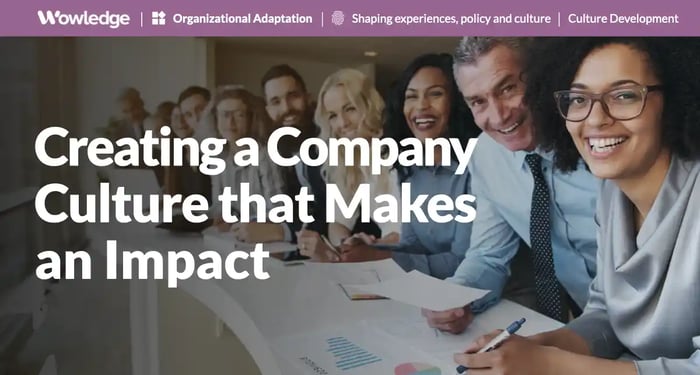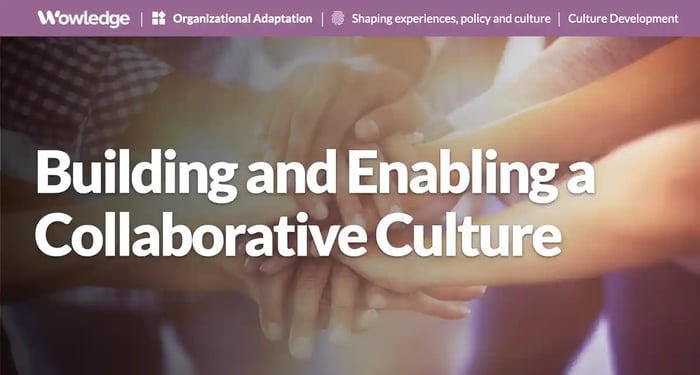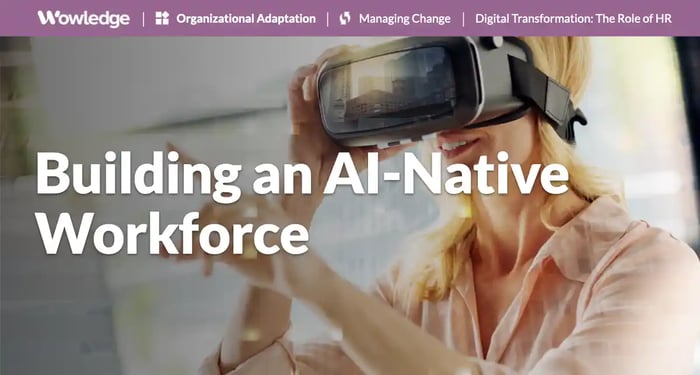Table of Contents
- Innovation defined
- The business value of enterprise innovation
- Innovation as an individual skill or capability
- Establishing and maintaining a culture of innovation
- 1. Establish a clear vision and goals
- 2. Build a business case
- 3. Facilitate leadership commitment
- 4. Empower and engage employees
- 5. Acquire, develop, or partner up
- 6. Practice open communication
- 7. Reward and recognize
- 8. Encourage cross-functional collaboration
- 9. Drive learning and development
- 10. Institutionalize a tolerance for failure
- 11. Track innovation metrics
- 12. Stay customer-centric
- Relevant Practices & Tools
- FAQs
There is a lot of discussion currently going on around disruptive technologies, led primarily by the widespread (and free) availability of artificial intelligence (AI) applications and agents, ChatGPT, Google Gemini, and others. Such technologies are being projected as opening doors to major innovations across industries and fields of study at a pace that will keep organizations on their toes as they seek to adapt to the new realities these potentially offer. We’ve spoken about the skills revolution and the pressures to keep up with rapidly advancing skills obsolescence, and the widespread availability of AI technologies and associated methodologies are putting even greater pressure on organizations to adapt. As a result, encouraging innovation and innovators is a business imperative.
According to a report by Accenture, four key trends are currently exploding and leading companies towards unprecedented opportunities for advances and innovation. These include Digital Identity (an integration of people’s physical and digital lives becoming intertwined), Generalizing AI (broadening the applications of generative and other forms of AI, Your Data, My Data (an increasing transparency between partners and customers for corporate-collected/generated data), and Our Forever Frontier (the acceleration of the feedback loop between science and technology). These trends address changes in both our enterprise capabilities and understanding of the world in which we operate businesses and will drive the need for the development of innovation and innovators. But even more so, there is a need to not only respond to these innovations but to harness them to create a competitive advantage.
This is the human aspect of the challenge that HR professionals need to be aware of and leverage for the company’s strategic benefit. And the opportunity contributes to long-term corporate success by leveraging both enterprise innovation and innovators.
Innovation defined
Innovation is a uniquely human capability that is now becoming accelerated with these major advances. But it is still a product of how we think, feel, and reason. According to the Organization for Economic Co-operation and Development (OECD) innovation in the business or scientific world is:
“The implementation of a new or significantly improved product (good or service) or process, a new marketing method or a new organizational method in business practices, workplace organization or external relations.“
It continues to define four types of corporate innovation (either novel or improved) through a functional lens:
- Product – related to the characteristics and uses of goods and services.
- Process – related to production and delivery methods.
- Marketing – related to product design, packaging, placement, promotion or pricing practices.
- Organizational – related to business practices, organization, or external relations.
Another way to look at innovation is based upon the nature or extent of the change that is involved. In this line of thought, we see four unique types of innovation:
- Incremental innovation, which refers to improving a product or service that already exists.
- Adjacent innovation relates to the expansion of an idea to appeal to a new audience or a new market.
- Disruptive innovation refers to the changes or applications that others failed to see.
- Radical innovation is the creation of a brand-new product, service, process, or technology.
In general, innovation is the improvement or creation of new ways to generate or do business. And it is the hallmark of companies that are often most admired and promoted as industry leaders. Doing it well is also a holy grail for top leaders who seek to differentiate and dominate the competition with more efficient operations, segment-leading products, optimally presented and priced goods and/or services, and benchmarkable practices. It feels like the “right” strategy to embrace, but it is a challenging one to not only create but maintain over the course of many years. Is it worth the investment?

The business value of enterprise innovation
Numerous studies over the years have demonstrated the business and financial rewards that flow from excellence in innovation at an organizational level. The companies that thrive as innovators tend to have built both a sustained culture and a reputation for excellence in this area. Companies that have dominated the top spots on lists include Apple, 3M, Microsoft, GE, Sony, Procter & Gamble, Alphabet (Google), Samsung, Walmart, Amazon, and Nike, among others. These companies have also experienced sustained growth and/or maintained a presence as market leaders for financial returns.
The research has demonstrated that the most innovative companies outperform their peers and the markets by a large margin. For example:
- McKinsey reports that top innovators generate twice as much revenue (38% vs. 19%) from new products or services than all other companies.
- Boston Consulting Group reports that the 50 most innovative companies outperform the MSCI World Index on shareholder return by 3.3 percentage points per year.
- GlobalData observes that innovative companies have 2.2X higher future earnings potential than others.
- MIT research found that innovative companies performed 11.6 percentage points higher on net profit margin and revenue growth compared to industry averages.
- LinkedIn reported on research which showed that “patent-heavy” companies outperform common stock indices by more than 1000% over 30 years.
- The Aberdeen Group found that best-in-class innovators experienced a 27% increase in revenue over the prior two years versus the industry average of 8%.
- Forrester observed in its research that the most innovative firms it surveyed grew nearly three times (3X) the industry average.
And in an interesting twist to the body of research, a study reported in Inc. Magazine found that organizations that engage all of their employees in generating new ideas, products, and services generate better ideas, implement them more quickly, and respond to changing markets better, and as a result experience 5.5 times the revenue growth of peers that are less inclusive. This is an excellent illustration of developing both corporate innovation and innovators.
All of this naturally leads us to implications for the HR community. Two primary takeaways from this should be 1) the importance of understanding (and communicating) the business value of creating a culture of innovation, and 2) a raised awareness of the elements that go into creating and managing an innovation mindset.
Innovation as an individual skill or capability
A question that comes up when discussing this topic is whether all employees are created equal when it comes to the potential for creative and innovative thinking. As one can imagine, and from experience, the answer is “it’s nuanced”. People have different strengths, skill sets, perception filters and biases, and mental capabilities. As a result, different models for the human innovator typologies have been proposed over the years, with, as we will see, some similarities emerge. The basis for these tends to come from the extent to which an individual possesses certain traits or thought characteristics, such as creative thinking, resourcefulness, integrative thinking, originality, critical thinking, curiosity, inventiveness, and so on.
A few examples will serve to illustrate the concepts related to innovation and innovators:
1. From a recent article in Harvard Business Review, four key innovation styles were identified by surveying over 110,000 people about what they like to do (and not do) and what they do well (and not do well) when they solve problems:
- Generators (find new problems and ideate based on their own direct experience).
- Conceptualizers (define the problem and prefer to understand it through abstract analysis).
- Optimizers (evaluate ideas and suggest solutions).
- Implementors (put solutions to work, experiment with new concepts).
Interestingly, each of these types fits into the flow of a four-stage innovation framework that the authors identified as what the most innovative companies practice. Each of the types (and steps) is needed for successful innovation.
2. From Values Centered Innovation, whose research found four distinct styles that represent individuals' unique approaches to meeting an innovative challenge, using a blend of all four. The styles are defined as:
- Visioning: Envisioning an ideal long-term solution.
- Modifying: Building on what has already been done.
- Exploring: Creating something radically new.
- Experimenting: Integrating and testing what can be combined to form a new solution.
The theory is that each person has a mix of capabilities, with some more dominant than others.
3. An intriguing approach to innovation typing that leverages the Myers-Briggs typology offers a similarly- positioned set of types. From the MBTI, four primary styles emerge:
- Creative Mavericks who use intuitive ideas and generate many diverse ideas or solutions.
- Visionary Leaders prefer to think in “big leaps” and identify “grand solutions.”
- Innovative Trouble-Shooters whose detail focus leads to incremental invention.
- Careful Conservators focus on evidence, detail, and getting things resolved.
Each of these types is equally needed on innovation project teams for the successful creation of new or improved solutions.
4. Idea Connection Systems, Inc. developed an assessment that measures preferred behavioral tendencies (strengths) for solving problems and working with others. What is especially powerful about its approach is that it interprets styles of thinking, relating, and behaving in the context of the type of innovation that a business or organization is trying to accomplish (e.g., radical innovation vs. continuous improvement).
Its Innovation Strengths Preference Indicator (ISPI) assesses people in three areas: How they think and process information, how they interact and relate to others, and how they make decisions. It has three types of innovators:
- Builder: best at evolutionary innovation that improves things or processes.
- Connector: best at expansionary innovation that creates changed or different solutions.
- Pioneer: best at revolutionary innovation that builds new or radical solutions.
In each of these models, the types are leveraged at different stages of innovation, from solution ideation to selection to building to implementation. And thinking about how people with different strengths can be used on a single project team can increase the likelihood of a successful run through the entire innovation cycle. Keep in mind that in these models, each type has weaknesses that the other types can compensate for – such as the Visionary or Maverick, who can tend to focus less on the implementation details and realities that a Conservator or Builder would do naturally.

Establishing and maintaining a culture of innovation
Building upon an understanding of how people differ and how those with different strengths can be put together to solve company challenges, the broader question arises of how to institutionalize innovation in such a way that provides the kind of business impact and returns that we see from research. It comes down to creating and managing a culture of innovation and innovators. Accomplishing that takes many strategies, but a deliberate, planned and systemic approach is essential.
Building and managing a culture of innovation is essential for companies to stay competitive and thrive in today's rapidly changing business landscape. Key tactics to help establish and nurture such a culture within an organization include:
1. Establish a clear vision and goals
Articulate a vision of what innovation means for the company and define specific goals and objectives. This vision should be communicated throughout the organization to align everyone towards the same purpose. Develop formal processes, practices, and programs that generate creative solutions to existing company objectives or challenges.
2. Build a business case
Establish a strategy and leverage data to communicate the purpose, costs and benefits of a disciplined approach to building and enhancing innovative practices. Identify target-rich areas for growth and fresh or improved sources of revenue, efficiencies, and market growth.
3. Facilitate leadership commitment
Develop top-level commitment, ownership, and accountability, including the active promotion of the importance of innovation throughout the company. This involves demonstrating their dedication to innovation through actions, resource allocation, and support for new ideas. Establish a governance process that engages leaders in the oversight, management, and tracking of innovation initiatives and plans.
4. Empower and engage employees
Encourage employees at all levels to participate in the innovation process. Create an environment where individuals feel empowered to share their ideas, take risks, and experiment without fear of failure. Actively create project teams that engage as many employees as possible over time to develop solutions to vexing business challenges, process inefficiencies, and customer requirements. Provide guidance to managers about taking calculated risks and reward them for planning projects with risk vs. reward analyses.
5. Acquire, develop, or partner up
Establish recruitment and hiring standards that target external leaders and employees with a demonstrated ability to innovate. Create development and mobility programs that encourage cross-functional and business unit collaboration and ide/expertise sharing. Identify other companies to partner with in the development of new technological, product or service enhancements.
6. Practice open communication
Foster a culture of open and transparent communication. Encourage regular idea-sharing sessions, feedback loops, and platforms where employees can contribute suggestions, concerns, and feedback. Promote company strategic objectives, plans, and initiatives frequently and solicit input.
7. Reward and recognize
Recognize and reward innovative efforts and successes. Leverage financial incentives, promotions, and public acknowledgments to celebrate successful innovations and progress towards creation goals. Include innovation goals and contribution ratings in performance evaluations.
8. Encourage cross-functional collaboration
Encourage collaboration among employees from different departments, disciplines, and backgrounds. Cross-functional teams often bring diverse perspectives, leading to more comprehensive and creative solutions. Reward leaders who engage with other functions, business units, or locations to develop solutions and offerings.
9. Drive learning and development
Promote a learning culture where employees are encouraged to develop new skills and stay up to date with the latest industry trends and technologies. Require employees to bring new applications of learned material back from courses, programs, conferences and project experiences. Engage employees with project opportunities to develop concepts and ideas leveraging new technologies or methodologies that can be applied to improving the organization’s current operations, products and services.
10. Institutionalize a tolerance for failure
Create a safe environment where failure is seen as a learning opportunity rather than a reason for punishment. Encourage employees to take calculated risks and learn from both successes and failures. Conduct “after-action reviews” of projects, product and service launches, and development efforts to identify where and why those succeeded, failed, or fell short of goals.
11. Track innovation metrics
Develop and track key performance indicators (KPIs) related to innovation efforts. Require the development of outcome or impact metrics for every initiative or project, and actively measure the progress and relative success of each innovation initiative. Use those to continuously evolve and improve the formal approaches based on data and feedback.
12. Stay customer-centric
Keep the focus on customer needs and pain points. Use customer feedback, sales and service data, social media ratings/rankings, and other forms of insights into customer satisfaction. Consider the feedback on existing products, services, processes and other interactions to continuously assess and understand opportunities for improvement and satisfaction.
Building a culture of innovation and innovators is an ongoing process that requires time, commitment, resources and adaptability. It requires active participation and support from all levels of the organization to truly thrive and make a lasting impact. But as can be seen, the direct benefits to the business and its customers can be significant.
Relevant Practices & Tools
Advanced HR Practices that Accelerate the New Digital Reality. >
An intense focus on the future of work in a digital organization is critical to the value realization of digital transformation... more »
Driving Adoption of the Digital Future to Optimize the Return on Digital Investments. >
The digital transformation will deliver a new way of operating for the business. It establishes a new status quo for what employees expect, how they work individually or in teams... more »
Accelerating the Organization Toward the Future by Building a Digital Culture. >
Companies successfully transforming their operations to a digital environment accumulate organizational momentum toward the new digital future... more »
Assessing How Emerging Technologies Can Shift the Organization Towards Innovative Frontiers. >
Technological developments, including artificial intelligence (AI) and machine learning (ML), are reducing the need for human-intensive work in some areas and are expanding... more »
The Elements of Digital Culture Library: Consult and Incorporate Digital Transformation Cultural Attributes into the Organization. >
This tool provides a library of cultural elements to consider and incorporate into the digital transformation journey. It illustrates behavioral attributes associated with each cultural... more »
FAQs
How can teams balance different innovation styles without friction?
Assign roles that match team member strengths and work styles, such as having some members assigned to explore options (e.g., researchers and creatives), others test and refine (e.g, process and product engineers), while others drive delivery and adoption (e.g., production and change agents). Make the workflow plan and progress visible so each role knows when its turn starts and ends. Use short working agreements on how choices are made to reduce debate time.
What governance keeps experimentation fast but controlled?
Train employees and require them to use standardized approaches (e.g., OD, Lean) grounded in the scientific method. Use a rapid oversight and approval process with three-step checkpoints: problem statement (in business, operational, or quantitative terms), solution evidence (proof points based on published research, benchmarks, or internal data and advanced analytics), and scale readiness. Each gate asks for a one-page summary and a single owner’s sign-off. Pilot test every approved solution using pre-approved budgets, rapid solution prototype development, and data access to avoid long waits between steps.
How should HR develop innovators without large new budgets?
Reassign part of existing learning time to project-based work tied to learning and applying objective approaches to solutions for real business problems. Curate short, free, or low-cost learning modules on creative thinking, problem framing, prototyping, and storytelling, then require a small project to apply them. Rotate staff through cross-functional projects and initiative “sprints” so skills grow while work moves forward.
How do companies reduce fear of failure in a practical way?
Define “safe-to-try” ranges for project time and expenses, and treat “misses” within those bounds as expected learning. Train and monitor managers’ leadership and support for learning through error. Hold brief after-action reviews that capture one insight, one change, and one next test for alterations in solution design approaches. Share these notes openly, so teams see that smart risks are valued, and others can learn from those trials. Use senior leadership communications to promote and champion controlled risk experimentation as a company value.










